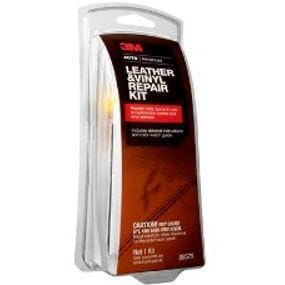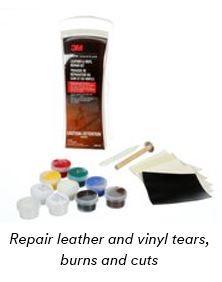Customer Services
Copyright © 2025 Desertcart Holdings Limited
Desert Online General Trading LLC
Dubai, United Arab Emirates







✨ Repair, Restore, Revitalize! ✨
The 3M Leather and Vinyl Repair Kit, 08579, is a comprehensive solution designed to repair cuts, tears, and burns in automotive leather and vinyl. This kit includes a color matching guide, textured grain papers, and all necessary tools for a professional finish. Ideal for various surfaces such as car seats, dashboards, and furniture, it helps maintain the aesthetic and value of your vehicle. With 7 mixable repair compounds and easy-to-follow instructions, this kit is perfect for DIY enthusiasts and professionals alike.


| Container Type | Packet |
| Viscosity | Medium-High |
| Water Resistance Level | Not Water Resistant |
| Full Cure Time | 24 Hours |
| Item Form | Kit |
| Special Features | Easy color and texture matching |
| Specific Uses For Product | Automotive interiors, Furniture, Marine & RV upholstery |
| Compatible Material | Vinyl, Leather |
| Volume | 2.8E+2 Cubic Centimeters |
| Item Package Quantity | 1 |
| Color | Clear |
| Material Type | Adhesive |
Trustpilot
2 weeks ago
3 weeks ago
1 month ago
3 weeks ago